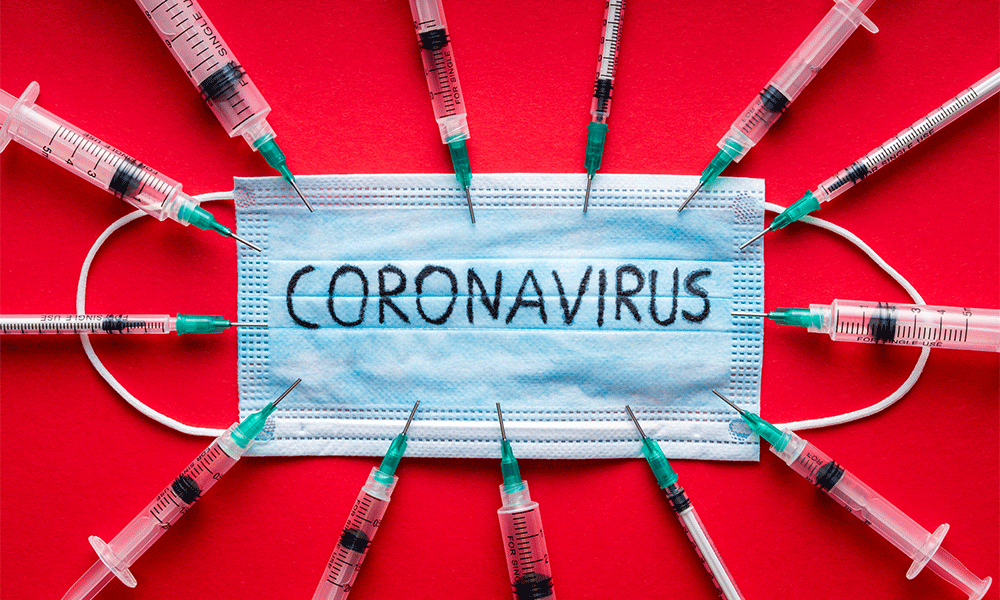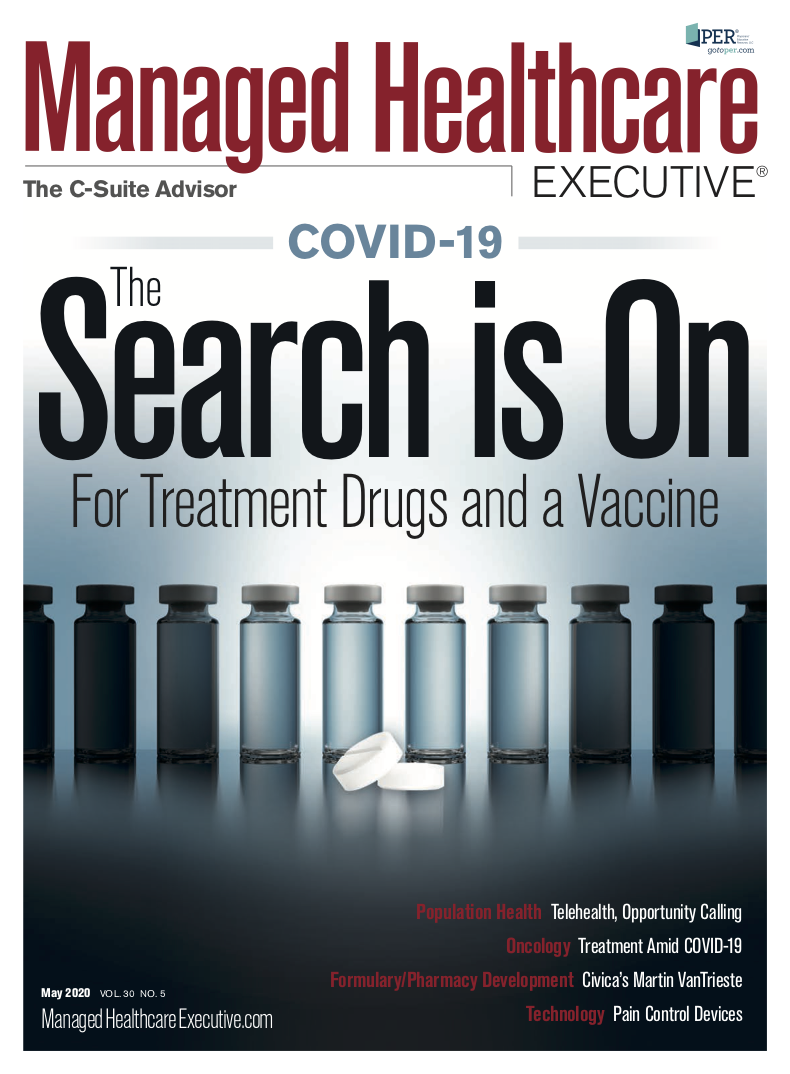The Search is on For Treatment Drugs and a Vaccine
Testing remains ongoing in the search for treatment drugs and a vaccine for COVID-19.

At the March 16 daily press briefing by the White House Coronavirus Task Force, Anthony Fauci, M.D., seemed excited in his buttoned-down way. This was before Fauci, director of the National Institute of Allergy and Infectious Diseases, became a household name; before millions of Americans grew familiar with his gravelly, Brooklyn-accented voice and carefully qualified statements; and well before Brad Pitt played him on “Saturday Night Live.”
Fauci told reporters and the TV audience that earlier that day, thefirst volunteer for a phase 1 trial of a candidate vaccine against COVID-19 had been injected. The volunteer was later identified as Jennifer Haller, an operations manager at a tech company in Seattle.“You might recall when we first got started that I said it would be two to three months, and if we did that, that would be the fastest we had ever gone from obtaining the sequence (of a virus) to being to a phase 1 trial,” Fauci said, with President Donald Trump standing to his left at a pre-social-distancing distance. “This has now been 65 days, which I believe is the record.”
Now it seems like that record was for the first 100 meters of what may turn into a full, 26.2-mile marathon. Fauci has since said repeatedly in interviews that it will probably be a year or more before a COVID-19 vaccine is not only tested but also deemed both safe and effective.
“It isn’t just the timetable. It has to be safe and it has to be effective,” Fauci said in an inter-view with a Canadian TV network.
As Fauci tapped the brakes, some vaccine developers raced ahead, raising hopes that more records would be set. At the end of April, CanSino Biologics, a Chinese company, said it was poised to start a phase 2 trial of its vaccine and would enroll 500 people in Wuhan, China, where the pandemic started.
Vaccine developers at Oxford University in England were going at an unheard-of speed. They collapsed the normally sequenced phase 1 safety and phase 2 efficacy trials into a single trial designed to enroll more than 500 volunteers. And as we went to press, they were gearing up for a phase 2/3 trial that would include 5,000 volunteers.
An inviting target
By some accounts, there are 86 COVID-19 vaccine candidates; by others, 115. In those two tallies, and in every other reasonable count, the vast majority of the COVID-19 vaccine candidates are in a preclinical stage and not ready to be tested in people. “There will be fierce attrition,” wrote Derek Lowe in his widely read blog for Science Translational Medicine. “and only a few (low single digits) will make it deep into the process.”
As COVID-19 vaccine kicked into gear, Regulatory Focus, the online publication of the Regulatory Affairs Professionals Society, started a helpful COVID-19 vaccination tracker to keep tabs on. At the end of April, the tracker listed one COVID-19 candidate, the bacillus Calmette-Guerin vaccine used primarily against tuberculosis, in as being in a phase 2/3 trials, six in phase 1, 10 in preclinical development, and 27 in a catchall “research in additional vaccine candidate” category.
In many ways, SARS-CoV-2, the virus that causes COVID-19, is an inviting target for a vaccine. Because of today’s powerful sequencing technology and prior experience with other coronaviruses, the RNA genome of the virus was sequenced quickly, giving researchers a handle on the virus’s reproduction and the encoding of its spherical outer shell, including those now-familiar spikes that give it the menacing look of the head of a medieval mace.
For vaccine developers, those spikes, called S proteins, are something of a dream come true because they are the means by which the virus binds to and infects cells, and antibodies that home in on and stick to S proteins can block that process. Many of the current crop of vaccines are designed to deliver this S protein (or a fragment of it) to trigger an immune response and unleash antibodies that will fend off future infection by SARS-CoV-2.
Vaccine developers also seem to have a relatively stable target in SARS-CoV-2. Decades of research into vaccines for HIV and hepatitis C have come up empty-handed partly because those viruses are elusive shape-shifters.
Technologies abound
But perhaps the principal reason for the momentum behind COVID-19 vaccine development is the blossoming of recombinant DNA and other related technologies over the past few decades. Vaccine developers have at their disposal any number of techniques for tweaking genomic material so it produce antigens that will provoke an antibody response and another workshop full of choices for how to assemble the vehicle for delivering it. The abundance explains the large field of candidates at the starting line of COVID-19 vaccine development and the large number of private companies involved, each betting that it has the smartest idea.
By one count, private companies are developing three-quarters of the COVID-19 vaccine candidates, with academic, government and nonprofit organizations developing the remaining quarter.The classic vaccine against viral diseases produces immunity using a live attenuated (or weakened) version of the virus. The smallpox; chickenpox; and measles, mumps and rubella vaccines - among the most effective available - use live attenuated vaccines. But with recombinant protein and genetic engineering tools, vaccine developers don’t need to use the whole virus. They can create vaccines that depend on crucial fragments of the antigen that provokes an antibody response; in the case of COVID-19, the go-to antigen is that spiky S protein.
In some cases, instead of employing a live attenuated virus, vaccine developers can patch together a facsimile of one, using the genomic material of re-engineered virus to express the parts of the antigen that trigger antibodies. Some current technologies, including some COVID-19 vaccine candidates, use DNA to get into cells and express the antibody-provoking antigens. Others hire RNA to do the job.
Problems and pitfalls
There might be some wind in the sails right now, but enthusiasm about a COVID-19 should be kept on a short leash. For one thing, there are no coronavirus vaccines on the market. A small number of vaccines against another coronavirus, SARS-CoV-1, made it into phase 1 trials but were abandoned when the 2003 SARS outbreak caused by that virus reced-ed.
The story is similar regarding a vaccine against the coronavirus that causes Middle East respiratory syndrome (MERS). The lack of a vaccine against other coronaviruses means aspects of testing and manufacturing a putative COVID-19 vaccine will be created more or less from scratch. Vaccines must be developed according to strict manufacturing. If one of the vaccine candidates that uses a new technology is deemed safe and effective, scaling up production will be uncharted territory. Researchers don’t have an agree-upon animal model. Fauci has spoken about a mouse model, and the Oxford group’s vaccine has been tested in rhesus monkeys. If several different types of animals are used for vaccines in the preclinical phase, comparing results may be difficult. Another challenge: identifying a vaccine that produces an enduring immune response. Coronaviruses also cause the common cold, and the immune response to those viruses is fleeting, a concern despite the significant differences between the common cold coro-naviruses and SARS-CoV-2. Also, to produce long-lasting immunity, a vaccine must produce an antibody response. A branch of the immune system called innate immunity doesn’t depend on antibodies or recognition of an antigen; it’s more of an all-purpose response to an invasive organism.
A vaccine that stirs up a transitory innate response won’t a ord the specific protection against SARS-CoV-2 that the world is hoping for. Many vaccines require booster shots. In a perspective piece published in the April issue of the medical journal Immunity, Fatima Amanat and Florian Krammer of Icahn School of Medicine at Mount Sinai in New York City said that it is “highly likely” that more than one dose of a COVID-19 vaccine will be needed because the population is currently naive to SARS-CoV-2. Full protective immunity probably won’t kick in till one or two weeks after the second vaccination. Some people won’t come back for the second shot, so even if a vaccine is identified, real-world effectiveness may fall short.
What’s more, Amanat and Krammer noted, the two-shot schedule lengthens any vaccine timeline by about a month because the initial injection and the booster shot usually have to be given several weeks a part. Another possible complexity with COVID-19 vaccination is the need for an adjuvant, an additive that enhance the antibody response. Sometimes adjuvants make a vaccine safer by lowering the dose required to get the same, or an even stronger, antibody response. Several companies, including GlaxoSmithKline and Dynavax, have promised to make adjuvants available for use with COVID-19 vaccines developed by other entities.
So far, COVID-19 appears to be far more harmful for older people than younger people. CDC data show that the gradient for COVID-19 hospitalizations steepens with age; for example, the rate for people ages 85 and older is twice that of those 65 to 74. This is a problem for vaccine development, as Amanat and Krammer point out, because the immune system wanes with age and becomes less responsive to vaccines. A COVID-19 vaccine that doesn’t protect what appears to be one of the most vulnerable parts of the population would obviously be a rather flawed vaccine. Higher doses or different adjuvants might be needed for older people.
Another obstacle may be antibody-depen-dent enhancement, a risk Fauci has discussed in several interviews. Instead of blocking viral infection, the antibodies that a vaccine produces can latch onto the virus and abet rather than block infection. Antibody-dependent enhancement can also trigger an out-of-control immune response. Enhancement has been an issue with vaccines against dengue and respiratory syncytial virus, according to Fauci, and results from lab tests when the vaccines against SARS and MERS were in development suggested that enhancement might be a problem. The risk of a vaccine resulting in more COVID-19, not less, is one of the many reasons Fauci and others have stressed the need for careful evaluation of COVID-19 vaccines.
Christine Blank is a freelance writer based in Orlando, Florida. Peter Wehrwein is the senior editor of Managed Healthcare Executive.®

This week on Tuning Into The C-Suite Briana Contreras spoke with Dr. Scott Hayworth, president and CEO of New York-based CareMount Medical. In this interview, the two discussed the importance of patients staying in contact with their doctors for the sake of reducing public health risks and to discuss ongoing care options with them.
Listen
Eric Levin talks PBMs and how Scripta is Tackling the Market's Challenges for Patients
July 22nd 2020MHE's Briana Contreras spoke with CEO of Scripta, Eric Levin. The two discussed the current state of the pharmacy benefit market and how the Scripta organization has been assisting its clients and their prescriptions prior to the COVID-19 pandemic and during.
Listen